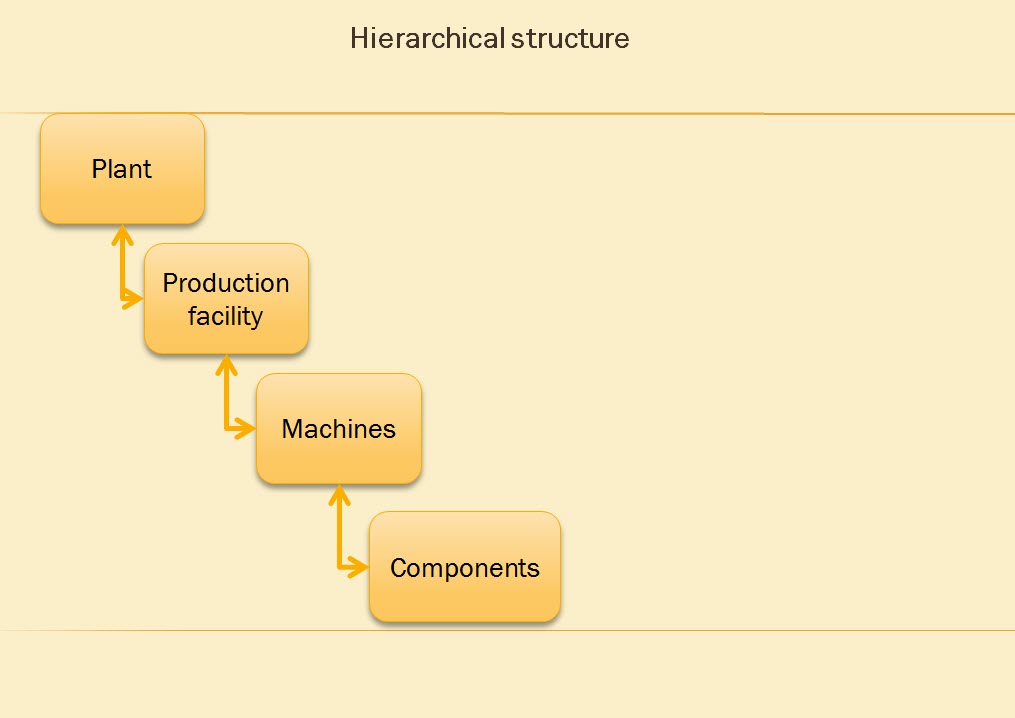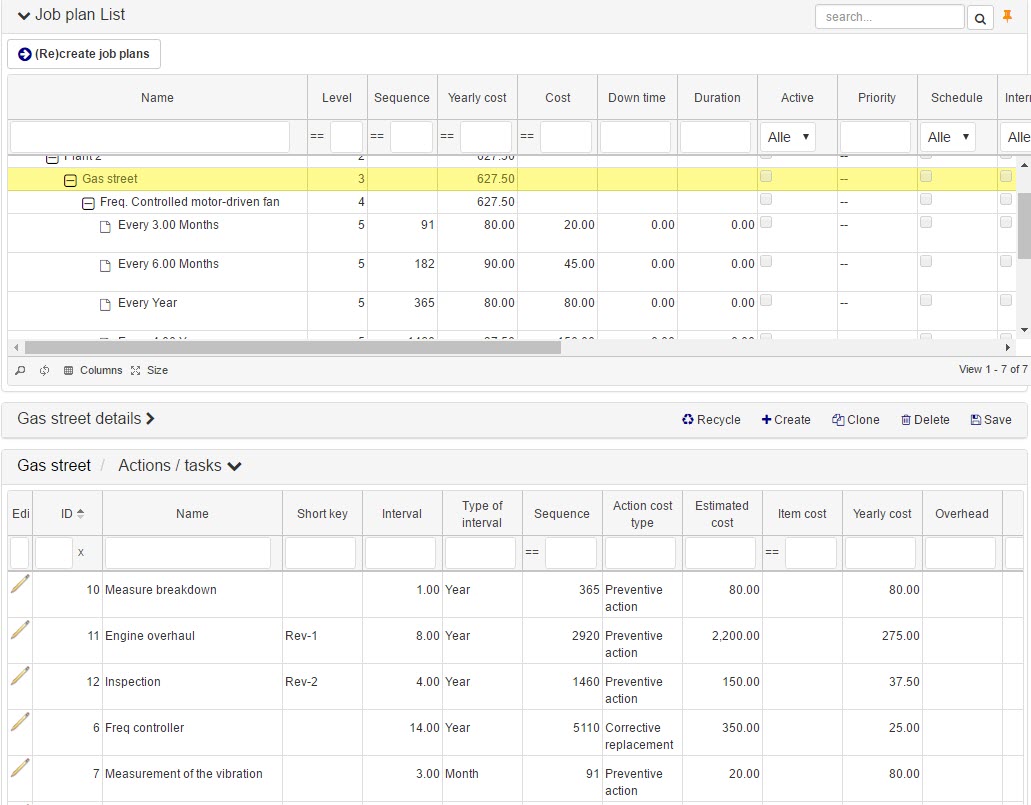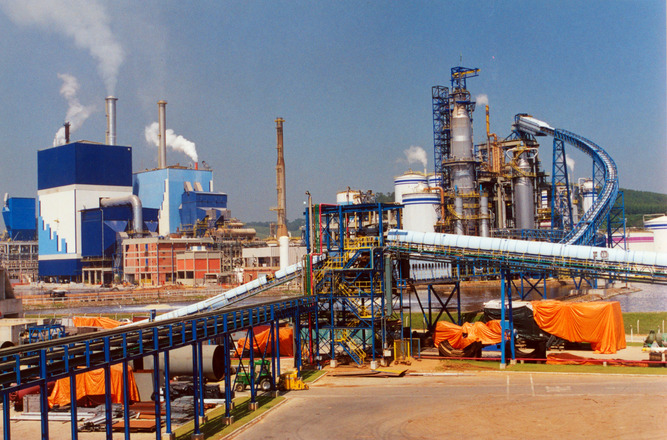
Clarify is a Web application to support risk analysis
Product details
Clarify is the software application to appoint and manage comprehensive, challenging risks in a simple, efficient way. In no-time you will learn how to determine maintenance costs and how to reduce them, including the possible consequences of these cost reductions.
The solution can be found when a clear, consistent overview of the different risks is made. The application offers a step-by-step plan and a big library.
The application supports a number of branches that allow for an easy start. The knowlegde needed for a succesful analysis is already embedded in the software. This saves time and gives the user the opportunity to focus on the essence of the information.
Clarify is supported with seminars and user sessions which provide a great stimulus to work together.
Marc Groote Woortmann
Functional object structure

Creating a risk analysis is a time-consuming activity. Therefor, it is useful to perform the analysis on a functional level. In this way, the risk is viewed from the function that has to be performed.
To achieve this, risks are assigned to a functional object structure. This structure can be composed and adapted to your own views.
Multiple layers
The buildup of objects is hierarchical. This is advantageous since risks can then be assigned to any level.
A rule of thumb is that a risk is granted at the highest level possible, allowing for the risk on the primary process to be acknowledged.
Risks

FMECA analysis
With help from a FMECA analysis, the risks can be recorded. A FMECA analysis is the ideal method to quantify effects and chances.
Multiple stages, preventive measures
To minimalize risks, preventive measures can be taken. The impact of these measures leads to a decrease of the risk, visualised by the FMECA analysis. Here, multiple stadia are connected to a risk.
There are three standard stadia.
- No measures applied.
- Necessary measures applied
- Optimally, the highest possible precautionary measures are applied in order to minimalize the risk.
Additionally, multiple stages which you can define can be added. These can be used to define alternative measures and compare their consequences.
First order, second order effects
The consequences of a risk may have an immediate effect. For example, if the fire detector is defect, there won't be a fire alarm. But the consequences of a risk may also have indirect consequences. If the fire detector is broken and a fire starts.
Clarify is suitable to capture effects of both first and second order and make a comparison between the two types. Additional measurements to minimize the second order effects can be registered separately.

Optimization
There always is a relationship betwee the corrective costs due to system failure and the preventive costs.
Increasing the preventive measures results in higher preventive costs but lower corrective costs. The optimum can be determined.
There are indicators, which are used by Clarify to determine whether the measures contribute to reach the optimal situation.

Preventive measures
Preventive measures can be added to each stage of a Fmeca analysis. The influence of the preventive measures on lifecycle costs is determined interactively. An extensive library of existing measures makes it easy to add fitting measures.
Labour costs and necessary resources
To take measures, tools are needed. This includes for example materials, tools, energy and many others. If necessary, the essentials can be added to the measure. Thus, a specification of the costs can be determined.
Lifecycle costs

In order to get a clear view of the relationship between corrective and preventive maintenance, the life cycle costs of a functional object are determined. The life cycle costs consist of all costs that have been made during the life cycle of an object. The benefits are also of great significance.
The lifecycle costs offer the opportunity to solve various matters. For example, early replacement of an old heating system with relatively low yield is advantageous. Difficulty lies in the possibility that the installation is prematurely made redundant and high purchase prices of a new installation are compared to lower gas costs.
Cost break down structure
The lifecycle costs are divided logically, based on diagrams which are dependent on the object. Naturally, these diagrams can be altered to allow for extra categories for costs and benefits in the life cycle costs if needed.
The following overviews are available:
- Graph of the actual costs
- Graph of the average costs
- Table of the actual costs
- Table of average costs
Maintenance plans

A distinction is made between three types of Maintenance plans.
- Job plans
This is a collection of preventive tasks. These are the conceptual plans, which can be reused indefinitely. - Multiannual maintenance plan Hereby, Job plans are applied to the Assets. The link between the task plans needs to be defined only once. This also is a conceptual plan which can always be applied again.
- Work orders Here, the multiannual maintenance plans are applied to the Assets. The status of the asset and export date now play a major role. A work order is executed only once and then deleted.
Job plans
The Job plans are composed from preventive actions. The preventive measures are grouped logically, for example per month or per year. The maintenance plans thus give an overview of your preventive maintenance tasks.
There is a large degree of freedom in respect to the manner in which the Job plans are composed. This flexibility is required to ensure good integration with the different maintenance packages.
This prevents unnecessary integration costs.
Multiannual maintenance plan
These are the Job plans which are applied to the Assets.
If a choice was made to carry out the risk analysis at a functional level, the Assets should by coupled to the functional objects. The maintenance plans are then composed from the combination af Assets and Functional objects.
A lot of unnecessary work can be prevented by constructing Functional Risk Analysis and coupling it to Assets. Since risks are secured only once, redundancy is thereby limited to a minimum.
Work orders
Work orders are derived from the long-term maintenance plans. But opposite to maintenance plans, which are fixed for multiple years, the work orders are only valid for one period.
For workorders, the current date and the state of the asset maintenance is taken into account. Clarify then creates a proposal with all measures which are to be implemented.
Standard is a REST service integration with Maximo IBM (Tivoli) available. Therefore, the work packages are directly available in Maximo, with automatical integration.
Assets

Assets are your technical company equipment.
For the purpose of efficient asset management, asset information is indispensable. The focus within Clarify is not only on asset maintenance, but also on the function of the asset within the primary process.
Starting point of Clarify is that the Assets are already documented in one of the existing applications within your organisation. Clarify is focussed on exchange of that data.
Electronic data exchange
By use of lightweight service, your Assets can be kept up-to-date without any effort. The service creates the connection and can be used to either send alterations from another application to Clarify or to send information from Clarify back to your maintenance application.
Standard formats
Clarify supports many standard formats. Therefore, exchange of information is not limited to your maintenance application, but can be shared with third parties such as suppliers, maintenance companies and manufacturers.
Multi criteria analysis

The importance of an asset with regard to primary process can be defined in a multi criterion analysis.
However when a risk occurs then the impact for the same Assets can be very different depending on where the Asset is located.
For example, if the bridge of a heavily used main road no longer opens then the consequences have much more impact than the bridge of a road with little local traffic.
Clarify offers the possibility to define the importance of the Assets.
A Multi criteria model consists of a number of criteria that you define and qualify the Asset that it concerns. For the example of the bridges the traffic intensity would be a useful criterion.
These criteria each have their own weighting. In this way, a score is created for a model that allows comparison of Assets on the basis of this score. This number is therefore a measure of the importance of the Asset.
For example, if the bridge of a heavily used main road no longer opens then the consequences have much more impact than the bridge of a road with little local traffic.
Also read
